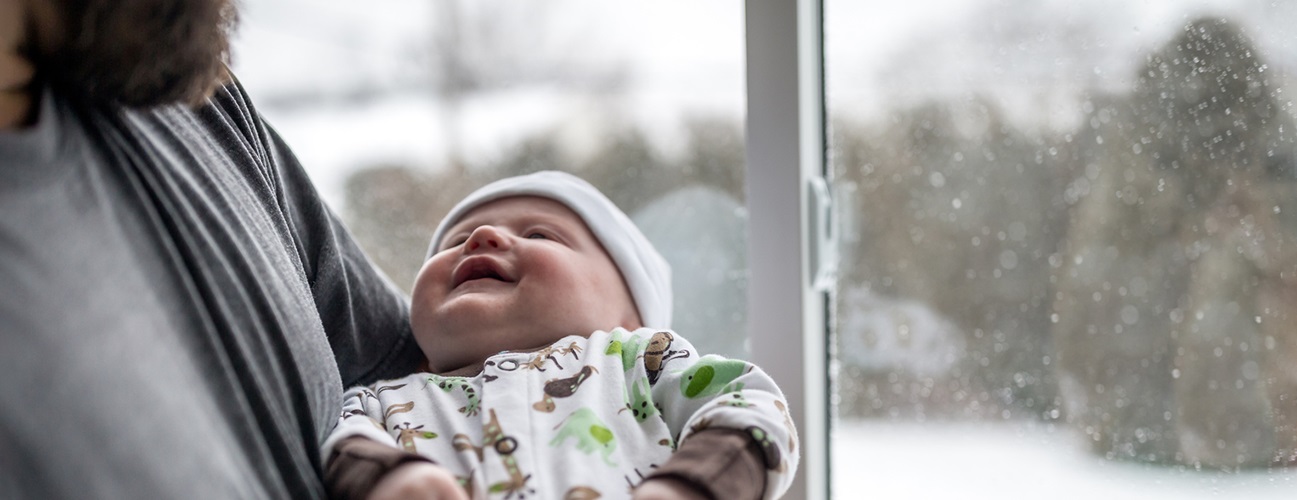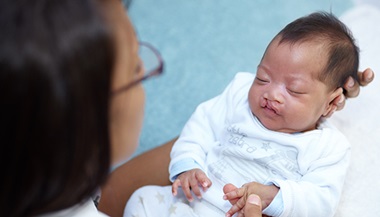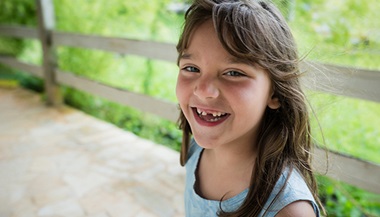Pierre Robin Sequence
What You Need to Know
- Pierre Robin sequence is also known as Pierre Robin syndrome or Pierre Robin malformation.
- It is a rare congenital birth defect characterized by an underdeveloped jaw, backward displacement of the tongue and upper airway obstruction.
- Cleft palate is also commonly present in children with Pierre Robin sequence.
- While the condition is equally common in males and females, there is a higher incidence among twins.
- A team of specialists will work together to address affected functions, including breathing, hearing, feeding and sleeping.
What Causes Pierre Robin Sequence?
The condition is referred to as a sequence because of the series of events that occur during fetal development. While the exact cause of the condition remains unknown, the sequence of anomalies experienced in the uterus begins with an underdeveloped jaw, which causes displacement of the tongue and subsequent formation of a U-shaped cleft palate. While some studies suggest there may be a genetic link, others point to crowding in the uterus or certain neurological conditions.
Pierre Robin Sequence Symptoms
Babies born with Pierre Robin sequence commonly experience trouble breathing and feeding early on, resulting from the tongue’s position, smaller jaw size and the cleft palate formation.
Additional symptoms of Pierre Robin sequence include:
- Repeated ear infections
- Natal teeth, or teeth that are present at birth
Pierre Robin Sequence Diagnosis and Treatment
Pierre Robin sequence can be diagnosed with a physical exam at birth. If your child has Pierre Robin sequence, you can expect treatment to come in stages. Since the condition affects a variety of functions, including hearing, breathing and feeding, several specialists will be involved in your child’s care.
Breathing
The first priority will be to keep the upper airway open to allow for proper breathing. Laying your child on his or her stomach can help prevent the tongue from blocking off the airway. If placing the infant on his or her stomach does not solve the problem, other treatments aimed at keeping the upper airway open may be recommended. These include a nasopharyngeal airway or nasal trumpet (a small tube threaded through the nose into the upper airway).
In cases of severe obstruction, your doctor may recommend surgery to enlarge the lower jaw (so that the tongue can come into the mouth) or a tracheotomy to create an opening in the windpipe.
Feeding
Jaw size, tongue placement and cleft palate all contribute to difficulties feeding. Infants with minor degrees of Pierre Robin sequence can learn to feed using specially adapted nipples and bottles.
However, for babies with more severe Pierre Robin sequence, the risk of inhaling fluid into the lungs is high. A feeding tube may be recommended as a temporary solution to allow for proper weight gain. While feeding difficulties decrease within the first two years, children that may need long-term assistance could require a gastric tube inserted into the abdominal wall.
Cleft Palate and Hearing Problems
The timing of the cleft palate repair varies depending on the child’s individual growth and development. It is typically addressed within 1 to 2 years of age.
Cleft palate is repaired with a two- to three-hour surgical procedure and requires a one- to two-night hospital stay. During the procedure, tubes may be inserted into the ear to lessen fluid buildup.
Some children may also require speech therapy following cleft palate repair.
Teeth Problems
Since the lower jaw is smaller in children with Pierre Robin sequence, teeth crowding is frequently a concern. Orthodontists, pediatric dentists and craniofacial surgeons should work together to monitor dental development.
Child Development With Pierre Robin Sequence
Parents and doctors should continue to monitor child development — particularly jaw and tooth development, growth, and speech — after treatment for conditions related to Pierre Robin sequence.






